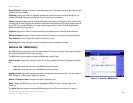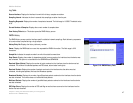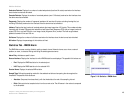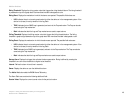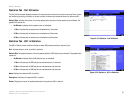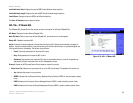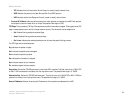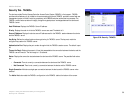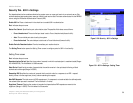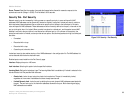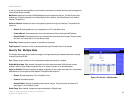
54
Chapter 5: Using the Web-based Utility for Configuration
ACL Tab - IP Based ACL
WebView Switches
• TCP. Indicates that the Transmission Control Protocol is used to classify network flows.
• OSPF. Matches the packet to the Open Shortest Path First (OSPF) protocol.
• UDP. Indicates that the User Datagram Protocol is used to classify network flows.
• Protocol ID To Match. Adds user-defined protocols to which packets are matched to the ACE. Each protocol
has a specific protocol number which is unique. The possible field range is 0-255.
TCP Flags. Filters packets by TCP flag. Filtered packets are either forwarded or dropped. Filtering packets by TCP
flags increases packet control, which increases network security. The values that can be assigned are:
• Set. Enables filtering packets by selected flags.
• Unset. Disables filtering packets by selected flags.
• Don’t care. Indicates that selected packets do not influence the packet filtering process.
The TCP Flags that can be selected are:
Urg. Indicates the packet is urgent.
Ack. Indicates the packet is acknowledged.
Psh. Indicates the packet is pushed.
Rst. Indicates the connection is dropped.
Syn. Indicates request to start a session.
Fin. Indicates request to close a session.
Source Port. Defines the TCP/UDP source port to which the ACE is matched. This field is active only if 800/6-TCP
or 800/17-UDP are selected in the Select from List drop-down menu. The possible field range is 0 - 65535.
Destination Port. Defines the TCP/UDP destination port. This field is active only if 800/6-TCP or 800/17-UDP are
selected in the Select from List drop-down menu. The possible field range is 0 - 65535.
Source IP Address. Matches the source port IP address to which packets are addressed to the ACE.



